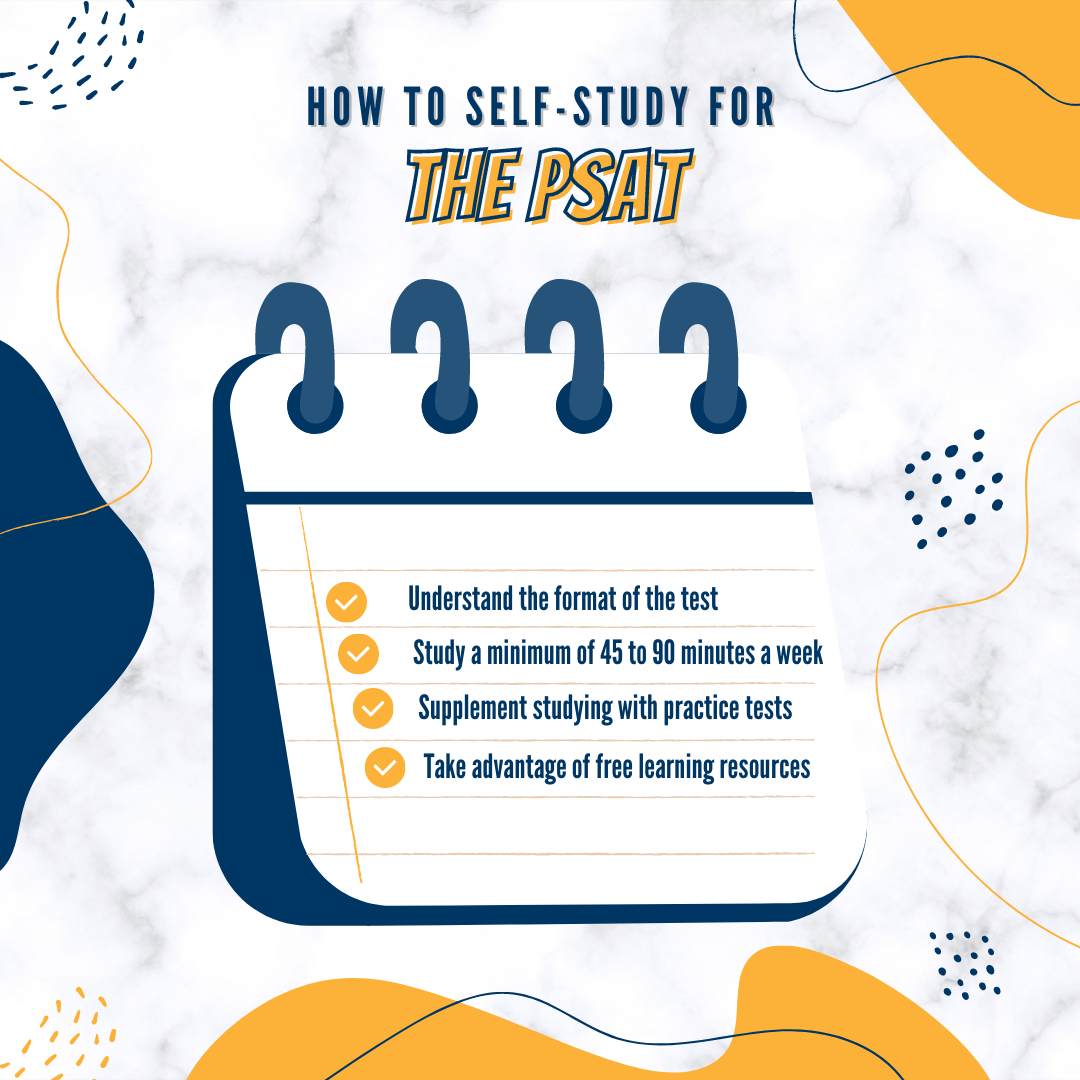The PSAT may be the first standardized test that a student takes, and while it may be less important than the SAT, that does not mean that one should not study for it. Creating a schedule to prepare for the PSAT will help students succeed at this test and provide a platform for when the student needs to begin studying for the subsequent SAT.
Format and Structure of the PSAT
- The PSAT includes three sections: Math, Reading Comprehension, and Writing & Language. You’ll have 165 minutes total to complete the test, broken down into 70 minutes for the Math section, 60 minutes for the Reading section, and 35 minutes for the Writing and Language section. PSAT scores range from 320 to 1520, with students in the 90th percentile scoring over 1210.
- Note the time allotted to complete each exam section. Students should also be aware that there is a portion of the math section where they cannot use their calculators. Those questions may take longer to solve. Students should make sure that their schedule accommodates just enough time to take the test.
When and How Long to Study for the PSAT
- Since the PSATs pull from the schooling curriculum, one should prepare for the PSAT during the school year. Students can focus on studying the topics they are currently learning instead of devoting a different set of notes to the PSAT.
- The College Board recommends that students study between 15 and 30 minutes per day a few times a week for a couple of months. Since Eighth-Graders, Freshmen, and Sophomores take the test in October, studying should begin at the start of the school year. Juniors taking the exam should start studying after the winter break.
- Research also done by the College Board suggests that between six to eight hours of official PSAT practice can gain a student up to 90 more points, and 20 hours of studying can result in a 115 points increase.
Best Ways to Practice
- Using the recommendations from the College Board, students should pick at least three days in a week in which they will study the 15 to 30 minutes. Studying can include reviewing class materials and also taking official PSAT practice problems.
- Students should supplement daily studying by taking PSAT practice exams. These can be purchased and taken at your leisure. Curvebreakers offers two free diagnostic exams to all students. These proctored exams are held every weekend both online and in our offices.
- The best part about making your study schedule is that it does not have to be as rigid as taking an entire practice course. You decide what topics to study and when to tackle them.
Other Tips & Tricks to Study for the PSAT
- As the day of the exam comes closer, students should start to study a little bit less to give the brain a rest. Research suggests that taking a break in the week leading up to an exam can help with memory.
- Use weekends and holidays as extra time to study while school is not in session, especially for students taking the PSAT/NMSQT.
- Other ways of reinforcing information without necessarily studying class notes or official College Board notes include making flashcards and using Khan Academy, a free partner website of the College Board that allows students to learn and study for official tests online.
Conclusion
- Self-studying is not perfect for everyone, but for some students, it is the best way to study for a test like the PSAT. A student can take control and put matters into their own hands with the help of practice tests and free learning resources.
- Students have the freedom to create and adjust a study schedule to best fit their needs, allowing them to get the most of their time spent studying for the PSAT.
Want to learn the best strategies for the PSAT?
Check out our self-study “YouTube-style” PSAT Strategy Accelerator Course.


